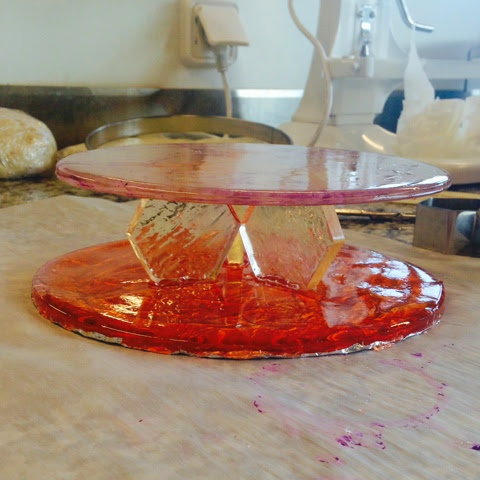What an intense week! I always find patisserie school so exciting because I come out having learnt so much and trying to cram my brain in with all the 'mental notes to self' and 'great idea to retain in head.'.
On thursday we had a mock exam for the parisserie practical. We are all shi**ing ourselves since there is only a month left until the real exam. Eek!! In six hours we had to make: 8 croissants and 8 pain au chocolat, 8 religieuses and 8 éclairs, a lemon meringue tart with five individual tartlets and a fruit 'entremet' decorated to the theme of the World Cup. We also had an oral exam on food science, which is not always brilliant when you're running between checking if your éclairs are not burning and your lemon curd is cold enough or your viennoiserie are ok, which, this time, unfortunately, mine were not. ...* I think I mixed the salt and sugar too close to the yeast which meant that the yeast didn't function well or something. ...* When my business studies teacher saw them, he laughed and said "your croissants look like ones you find in Austria!". The French are quite snobby about their croissants. And when I say 'quite', I mean, ridiculously so.

But the funnest thing we did this week was make things out of sugar.
First step is to lay everything out that you will need once your sugar is ready. You can use tart tins as moulds, and you can line them with tin foil for a cool effect. Everything must be greased with oil which facilitates the de-moulding.
Sugar and water are heated together until boiling. Glucose is added, and then a thermometer is used to measure the temperature of the sugar.
Once the temperature reaches 155 degrees C, the sugar is removed from the heat and the bottom of the pan is dipped in a large bowl of cold water so that the sugar doesn't keep cooking.
A few drops of food colouring is added to the sugar but not mixed. The action of pouring the sugar into the mould creates a marbled effect.
The small moulds you can see in the photo are good for if you want to pile the plates on top of one another, they act as supports.
How nice is that?












No comments:
Post a Comment